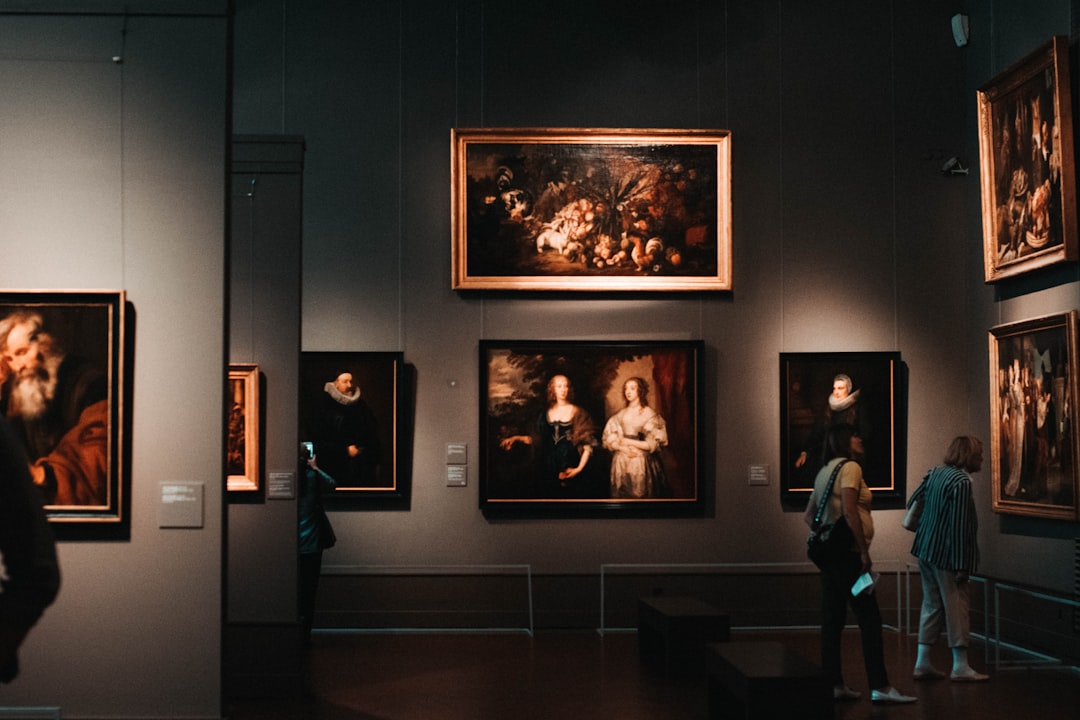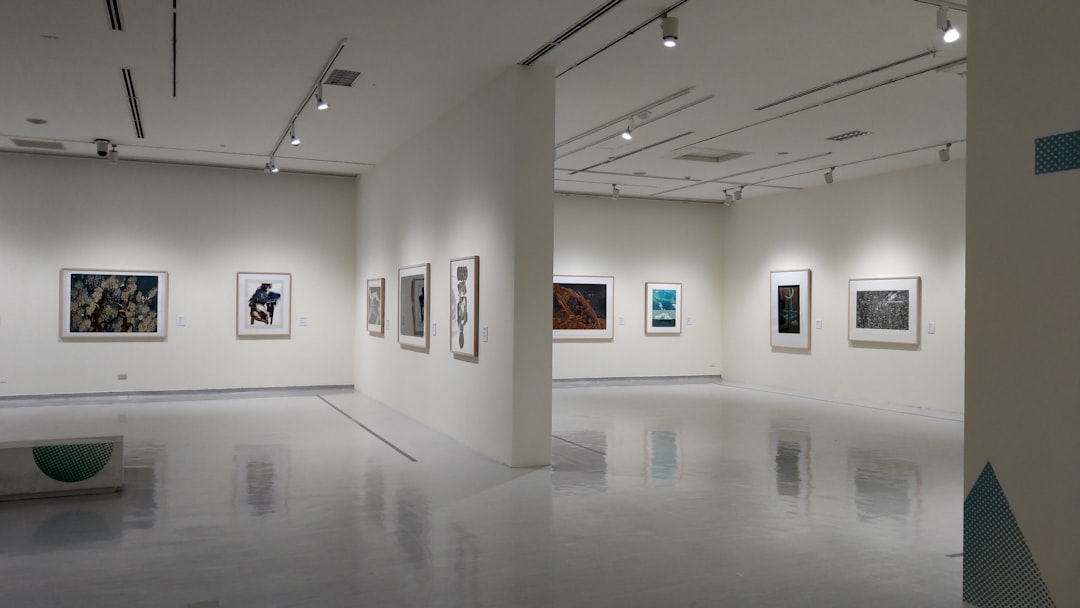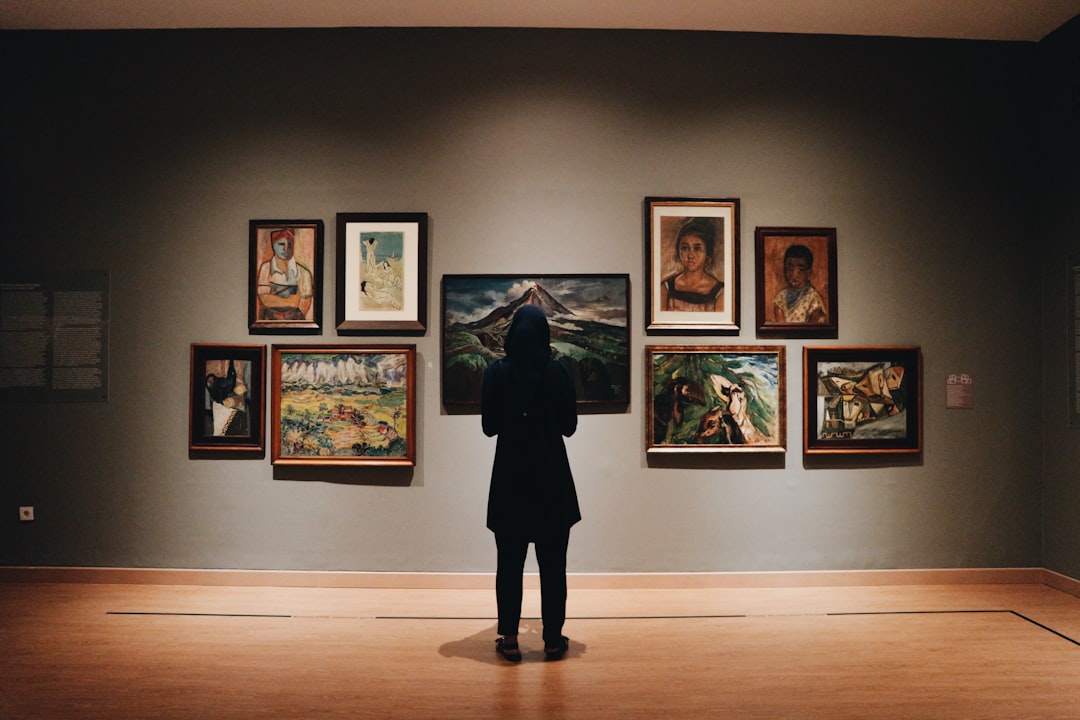Cryptocurrency has taken the world by storm, and its impact can be felt in various industries. The art world is not an exception, and the emergence of cryptocurrency has brought a significant shift that has revolutionized the industry. With digital assets, blockchain technology, and cryptocurrency becoming more mainstream, we are currently witnessing an unprecedented change in the way artists showcase, sell, and purchase their artworks.
This shift is not only changing the way things have been done in the past, but it also presents new opportunities for artists and collectors alike. As a result, it is worth taking a closer look at how cryptocurrency and blockchain technology are transforming the art world.
Before the invention of blockchain technology, the global art market was traditionally a closed system, with high-level artworks traded between elite galleries and auction houses. However, with blockchain technology and cryptocurrencies, artists can now create art pieces and sell them directly to collectors without intermediaries.
Additionally, the content of art assets can be stored on the blockchain, which allows for permanent records of ownership, authenticity, and other important details. The blockchain enables artworks to be represented as unique digital assets, allowing collectors to own a unique share in their purchase.
In the coming sections, we will explore the various ways that cryptocurrency technology and blockchain are revolutionizing the art market, including the decentralized marketplaces, enhanced authentication and transparency, global accessibility, smart contracts, and non-fungible tokens. By the end of this blog, you’ll have a more in-depth understanding of how cryptocurrency is shaping the way art is created, traded and collected.
Decentralized Marketplaces: Breaking Down Barriers
As technology advances, so too do the ways in which we conduct business. This is certainly true for the art world, where the rise of cryptocurrency and blockchain technology has paved the way for decentralized marketplaces that are transforming the way art is sold and collected.
Traditionally, the art world has been dominated by a handful of auction houses and galleries that have held a near-monopoly over the industry. These middlemen have controlled the market, setting prices and taking hefty commissions on the sale of artwork. For emerging artists, gaining access to the market has been a daunting and often impossible task.
The advent of decentralized marketplaces, however, has changed all of that. Through these platforms, artists can now directly connect with potential buyers, cutting out the middleman and retaining greater control over the sale of their artwork. Buyers, for their part, can access a wider range of artwork and engage with artists on a more personal level.
One of the most notable decentralized marketplaces is OpenSea, which bills itself as the “largest marketplace for crypto collectibles.” Artists can use the platform to sell one-of-a-kind artwork and digital collectibles, like trading cards and virtual real estate, using cryptocurrencies like Ethereum.
This new approach to art sales is not without its challenges, however. Without the traditional gatekeepers to ensure quality and authenticity, there is a risk of fraud and a lack of trust. This is where enhanced authentication and transparency, covered in the next section of this post, come into play.
Overall, decentralized marketplaces are breaking down barriers and giving artists greater control over the sale of their artwork. As the technology continues to evolve, we can expect to see even more opportunities for artists and collectors to connect with one another in exciting new ways.
These middlemen have controlled the market, setting prices and taking hefty commissions on the sale of artwork.
Enhanced Authentication and Transparency: Combating Fraud
The art world has always struggled with issues of authentication and transparency when it comes to buying, selling, and trading artwork. However, with the advent of cryptocurrency and blockchain technology, the art market is seeing an increase in transparency and security. Transactions that used to take days or even weeks to complete can now be processed in a matter of minutes, thanks to the blockchain’s ability to verify and record every transaction.
One of the most significant benefits of using cryptocurrency and blockchain technology in the art world is the ability to combat fraud. Fraudulent activities, such as selling counterfeit art or using false provenance to increase the value of artwork, have plagued the art world for centuries. However, blockchain technology and smart contracts can provide a solution to these issues.
The use of blockchain technology in the art world ensures that every transaction is secure, transparent and tamper-proof. This means that each artwork’s origin, ownership, provenance, and sale history can be tracked and verified, ensuring that every transaction is authentic and legitimate. In turn, this makes it much more difficult for fraudsters to manipulate the art market.
Smart contracts, which are built on top of blockchain technology, also play a crucial role in enhancing authentication and transparency. Smart contracts are self-executing digital contracts that automatically enforce the agreed-upon terms of a transaction when specific conditions are met. This eliminates the need for intermediaries or third parties in the art market, making transactions faster, cheaper and more secure.
By using blockchain technology and smart contracts in the art world, buyers and sellers can rest assured that they are dealing with legitimate artwork and genuine transactions. Also, artists can protect their intellectual property and streamline the selling process, ensuring that they are paid fairly for their work.
In conclusion, the use of cryptocurrency and blockchain technology in the art world is addressing many of the long-standing issues in the industry. Enhanced authentication, transparency and security are providing a new level of trust and legitimacy to the art market. By embracing these technologies, the world of art can evolve and grow in exciting new ways.
Transactions that used to take days or even weeks to complete can now be processed in a matter of minutes, thanks to the blockchain’s ability to verify and record every transaction.
Global Accessibility: Connecting Artists and Collectors Worldwide
Cryptocurrency is not just a new financial instrument; it can also serve as a gateway to the global art world. Cryptocurrency allows artists from all corners of the world to reach collectors who were previously out of reach. This opens up new markets and opportunities for artists who may have otherwise struggled to gain exposure.
The internet has helped to democratize the art world to a certain degree. Artists can now showcase their work online, and social media has made it easier for them to connect with individuals who would like to purchase their art. However, the use of traditional payment methods can still be an issue, particularly for artists based outside of the developed world.
Cryptocurrency, on the other hand, is a global currency that can be transferred easily and quickly across borders. This means that artists in countries with less developed financial systems can still participate in the global art market. By using cryptocurrency, they can bypass the need for expensive currency exchanges or the risk of having their payments delayed or lost in transit.
For example, an artist in rural India could sell their work to a collector in New York, and receive payment in Bitcoin. This would eliminate the fees associated with international bank transfers and currency exchanges, and reduce the risk of fraud or other issues associated with traditional payment methods.
The global accessibility of cryptocurrency also means that collectors have a wider pool of artists to choose from. They can connect with artists from all over the world simply by using cryptocurrency to purchase their work. This creates a more diverse and inclusive art market, which benefits both artists and collectors.
Overall, the global accessibility of cryptocurrency is one of its most significant contributions to the art world. It allows artists and collectors to connect and transact in a way that was previously impossible. As more and more individuals become comfortable with cryptocurrency, we can expect this trend to continue, transforming the art world in ways that we cannot yet imagine.
This means that artists in countries with less developed financial systems can still participate in the global art market.
Smart Contracts: Streamlining Transactions
The world of art transactions has been characterized by complex documentation and intermediaries, often leading to high transaction costs and low accountability. With the advent of blockchain technology, smart contracts have emerged as a viable solution for streamlining art transactions. These contracts are self-executing and can be programmed to automatically perform specific actions based on predefined conditions.
For instance, smart contracts can be used to automate payments to artists, making transaction settlements faster and more efficient. The transparency offered by blockchain technology ensures that every transaction detail is documented, and parties involved can track the progress of the transaction in real-time.
Another advantage of smart contracts is that they eliminate the need for intermediaries, such as brokers and lawyers, thus reducing transaction costs. Moreover, they eliminate the possibility of human error, fraud, and other mistakes that can arise from manual transactions.
In the art world, the use of smart contracts also ensures that artists and creators receive their rightful share of the proceeds from the sale of their work. This feature is particularly useful in the case of collaborative art projects where the ownership structure can be complex.
Smart contracts can also help to automate the transfer of copyright licenses, enabling artists to retain ownership and control over their work even after it has been sold. This is made possible by encoding the licensing terms into the smart contract, which is self-executing and irreversible.
In conclusion, smart contracts are transforming the way transactions are conducted in the art world. Their efficiency, transparency, and cost-effectiveness make them the ideal solution for streamlining transactions, ensuring fair payments, and improving accountability. With the continued growth and adoption of blockchain technology, smart contracts are set to revolutionize the art world even further.
With the advent of blockchain technology, smart contracts have emerged as a viable solution for streamlining art transactions.
Non-Fungible Tokens (NFTs): Revolutionizing Ownership
Non-fungible tokens, also known as NFTs, are digital assets that are unique and cannot be replaced by anything else. They are created on blockchain technology, which enables them to be verified and owned by a single user. NFTs have already had a significant impact on the art world, revolutionizing the way we think about ownership and value.
Traditionally, art collectors purchase physical artworks, such as paintings or sculptures, and claim ownership of the physical object. But with NFTs, collectors can now claim ownership of the digital file itself, providing a secure and transparent way to verify ownership and transfer it between parties. This opens up a world of possibilities for artists who create digital art or distribution, such as music or videos.
NFTs have already proven to be a lucrative market for artists and collectors, with sales reaching millions of dollars for single pieces of digital artwork. For example, in March 2021, digital artist Beeple sold an NFT artwork for $69 million at Christie’s auction house, making it the most expensive NFT ever sold.
NFTs have also brought new opportunities for emerging artists who may have previously struggled to sell their work in a traditional art market. By creating unique and scarce digital assets, artists can sell their work directly to collectors without the need for a middleman.
However, as with any new technology, there are questions surrounding the sustainability and longevity of the NFT market. Some argue that it is a bubble that will eventually burst, while others see the potential for continued growth and innovation.
Despite the debates, it’s clear that NFTs are revolutionizing the way we buy, sell, and own art in the digital age, offering a level of transparency and authenticity that traditional art markets often lack. As the use of blockchain technology continues to expand, it’s exciting to think about the endless possibilities that can be unlocked for both artists and collectors.
But with NFTs, collectors can now claim ownership of the digital file itself, providing a secure and transparent way to verify ownership and transfer it between parties.
Conclusion: Embracing the Future of Art and Cryptocurrency
As we have seen through the previous six sections of this blog post, the impact of cryptocurrency on the art world is undeniable. Through its decentralized nature, enhanced authentication and transparency, global accessibility, smart contract technology, and NFTs, the world of art is changing rapidly.
While some may be hesitant to embrace these changes, it is important to recognize the benefits they bring to the industry. Decentralized marketplaces break down barriers between artists and collectors, allowing for a more democratic marketplace. Enhanced authentication and transparency combat fraud, ensuring that collectors can trust the authenticity of their purchases. Global accessibility connects artists and collectors from different parts of the world, fostering multiculturalism and diversity. Smart contracts streamline transactions, making it easier for artists to monetize their work. NFTs revolutionize ownership, providing a new way of valuing and exchanging artwork.
It is clear that the future of art and cryptocurrency is brighter than ever before. As technological advancements continue to shape the world around us, it is important for the art industry to keep up. By incorporating cryptocurrency into the art market, we can foster creativity, innovation, and growth. As we move forward, we must embrace this exciting new future with open arms.
In conclusion, cryptocurrency’s impact on the art world is a positive force to be reckoned with. By breaking down barriers, combating fraud, connecting artists and collectors globally, streamlining transactions, and revolutionizing ownership, cryptocurrency is transforming the art industry for the better. Let us embrace the future of art and cryptocurrency with optimism and enthusiasm.





